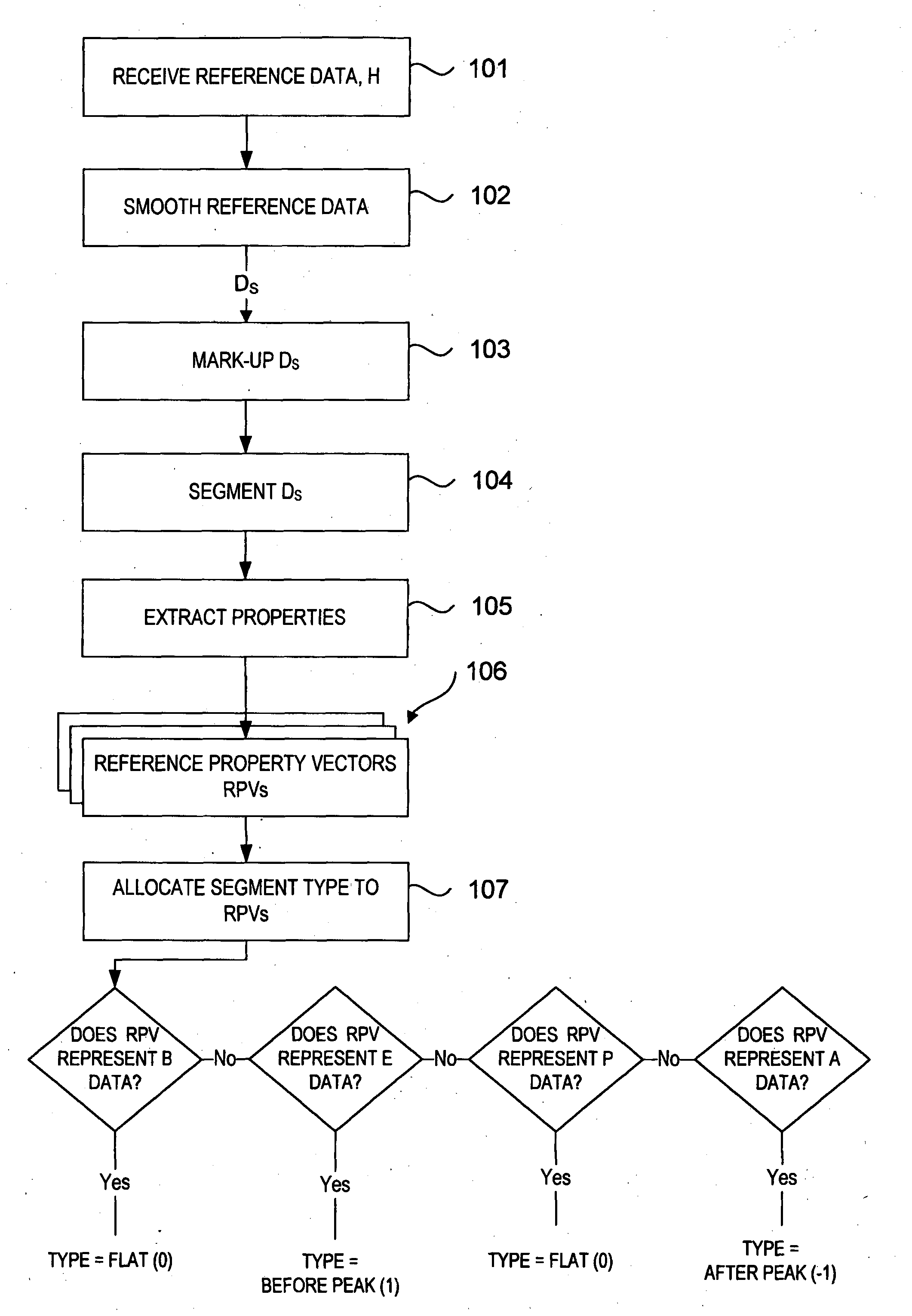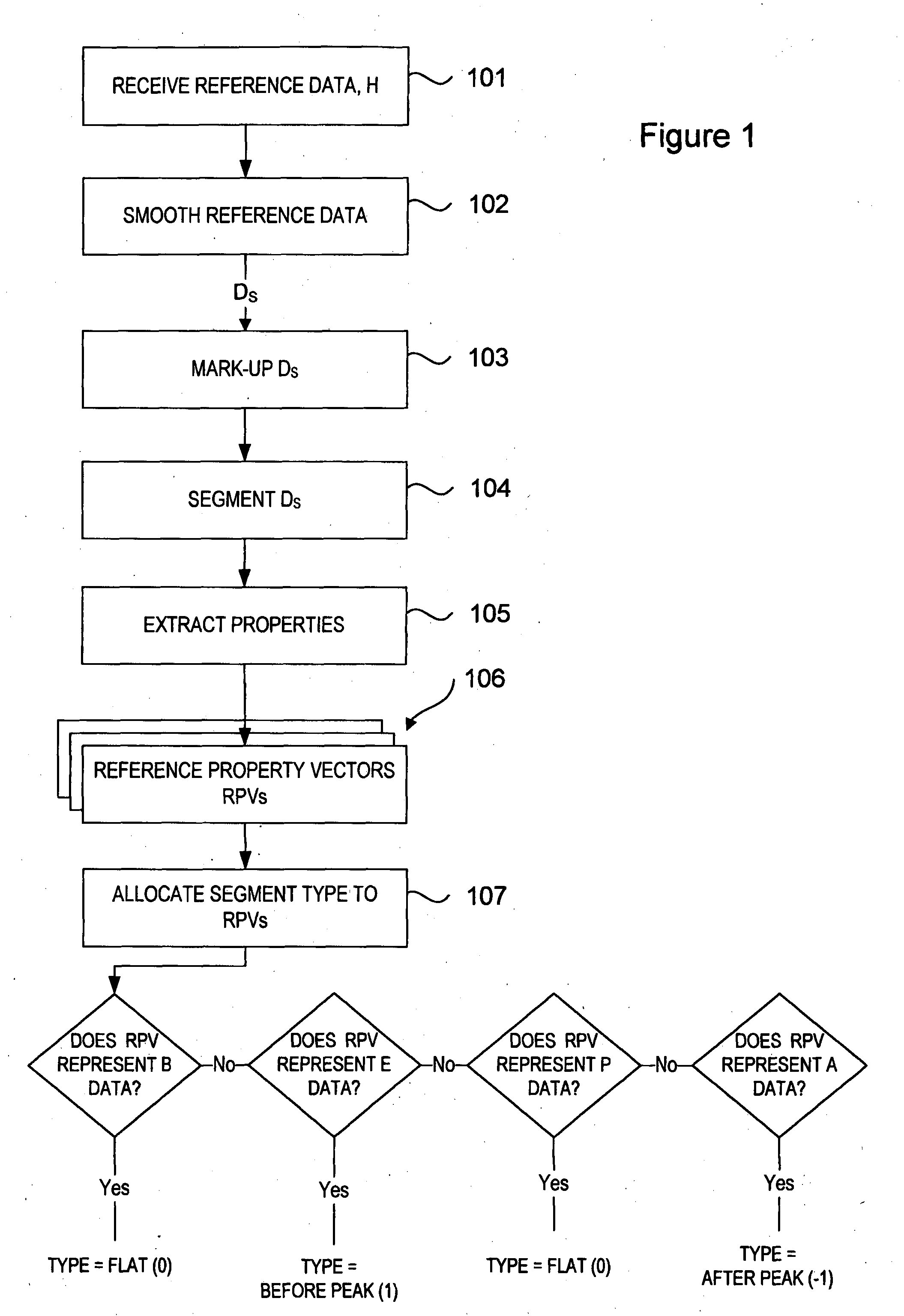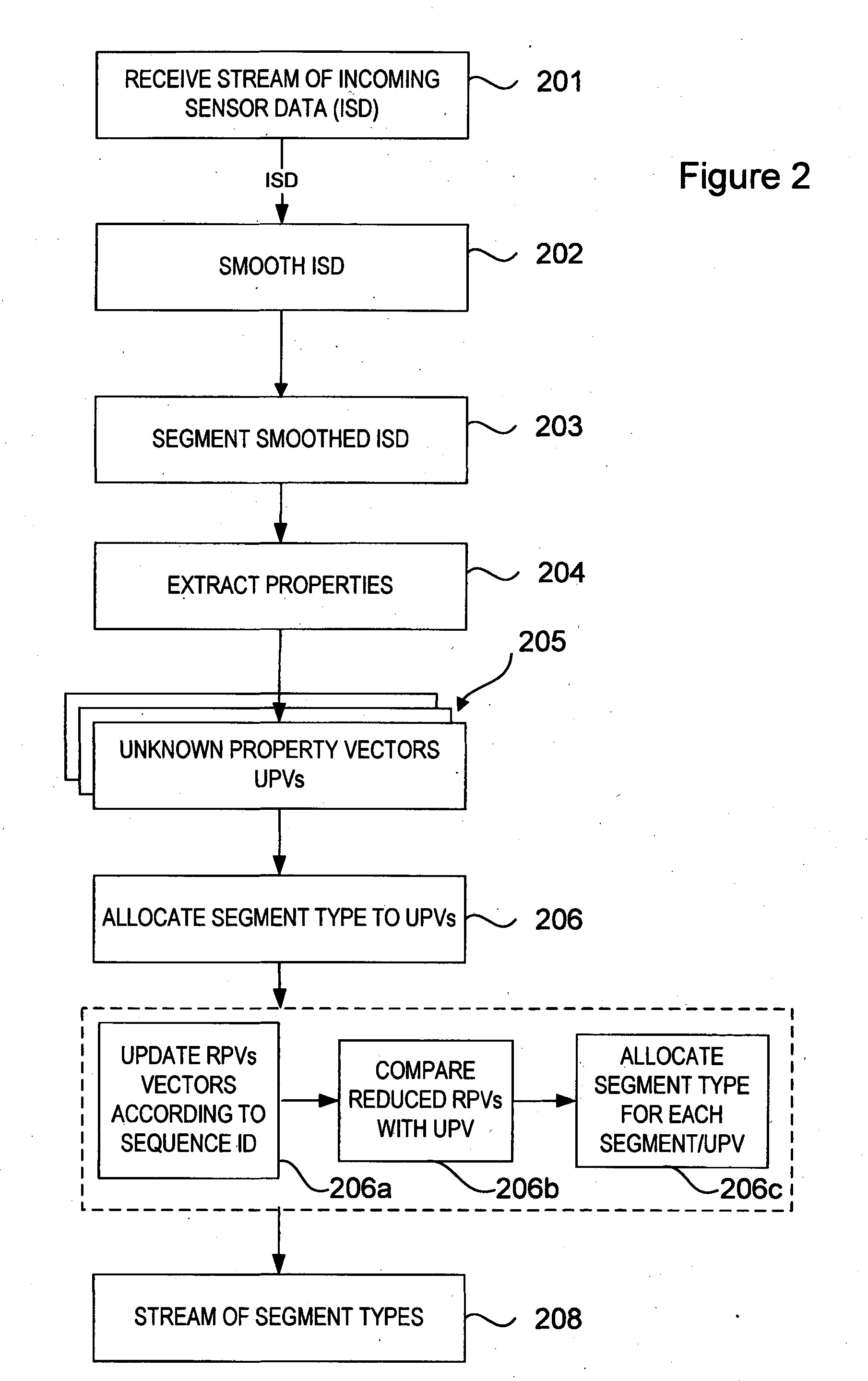Event detection algorithms
a detection algorithm and event technology, applied in the field of event detection algorithms, can solve the problems of significant resource burden, inability or inability to cooperate, involuntary or uncontrolled urination, etc., and achieve the effect of reducing the influence of more distant reference property vectors
- Summary
- Abstract
- Description
- Claims
- Application Information
AI Technical Summary
Benefits of technology
Problems solved by technology
Method used
Image
Examples
example
“Property Extractor Function” Using Moving Window
[0097]The following section describes one example of an approach to extracting properties from data which employs a “moving window” approach to process reference data in finite segments. A moving window may be defined as a bounded window applied to data from which various ‘properties’ are extracted. The window may have any closed regular or irregular polygonal shape such as square, triangular, hexagonal, quadrilateral or the like, or it may be e.g. round, oval or elliptical. The window sides may each have the same or different pre-defined dimensions. Alternatively, one or more of the window sides may have a dimension, e.g. a length which varies, e.g. depending on the type or property / properties of previous segment types in a sequence. In one embodiment, the window has only one dimension e.g. it represents a line having width w or height h or a line which is curved or diagonal but which does not form a closed boundary. A window side le...
example a
[0155]Showing application of Before Peak and After Peak Test A.
Assume a stream of segment types:
[0156]0,0,0,0,1,1,1,0,−1,null,1,1,1,1,1,1,null,0,−1,−1,−1,0,null,1,1,−1,−1,−1,0,0
Where null can be attributed a segment type value=0.
Test size l=5
Before Peak threshold α=3
After Peak threshold β=−2
The stream of values T is:
1st2nd3rd4th5th6th7th8th9th10th11th12th13th14th15th16th123321112455431−117th18th19th20th21st22nd23rd24th25th26th27th28th−3−3−3−1110−1−2−3−2−1
[0157]Test A reveals a positive Before Peak Test (signifying start of a new event) at the third value i.e. T=3 (underlined) and a positive After Peak Test (signifying end of peak stage and start of after event) at the 17th value i.e. at T=−3 (underlined). An event peak is represented by the data corresponding to 3>T>−2. Accordingly the event peak is represented by data corresponding to the 15th and 16th values of T having values 1 and −1 respectively (shown with double underline).
Test B.1
[0158]1. Set two thresholds, α% and β%, to be...
example b.1
[0178]Assume a stream of segment-type vectors where the segment types in each vector having the highest likelihood of belonging are as follows, where f represents flat, r represents Before Peak, n represents null and d represents After Peak segment types:
[0179]f 30%, r 50%, r 89%, n 90%, f 95%, r 30%, d 10%, d 30%, r 20%, d 70%, f 20%, d 50%
[0180]Threshold α=80
[0181]Threshold β=50
[0182]Test B.1 reveals a positive Before Peak Test (signifying start of a new event) in data represented by the 3rd segment (where r=89%) in the sequence of segments obtained from the incoming data. Similarly, Test B.1 reveals a positive After Peak Test (signifying end of peak stage and start of after event) at the 10th segment (where d=70%).
PUM
 Login to View More
Login to View More Abstract
Description
Claims
Application Information
 Login to View More
Login to View More - R&D
- Intellectual Property
- Life Sciences
- Materials
- Tech Scout
- Unparalleled Data Quality
- Higher Quality Content
- 60% Fewer Hallucinations
Browse by: Latest US Patents, China's latest patents, Technical Efficacy Thesaurus, Application Domain, Technology Topic, Popular Technical Reports.
© 2025 PatSnap. All rights reserved.Legal|Privacy policy|Modern Slavery Act Transparency Statement|Sitemap|About US| Contact US: help@patsnap.com



